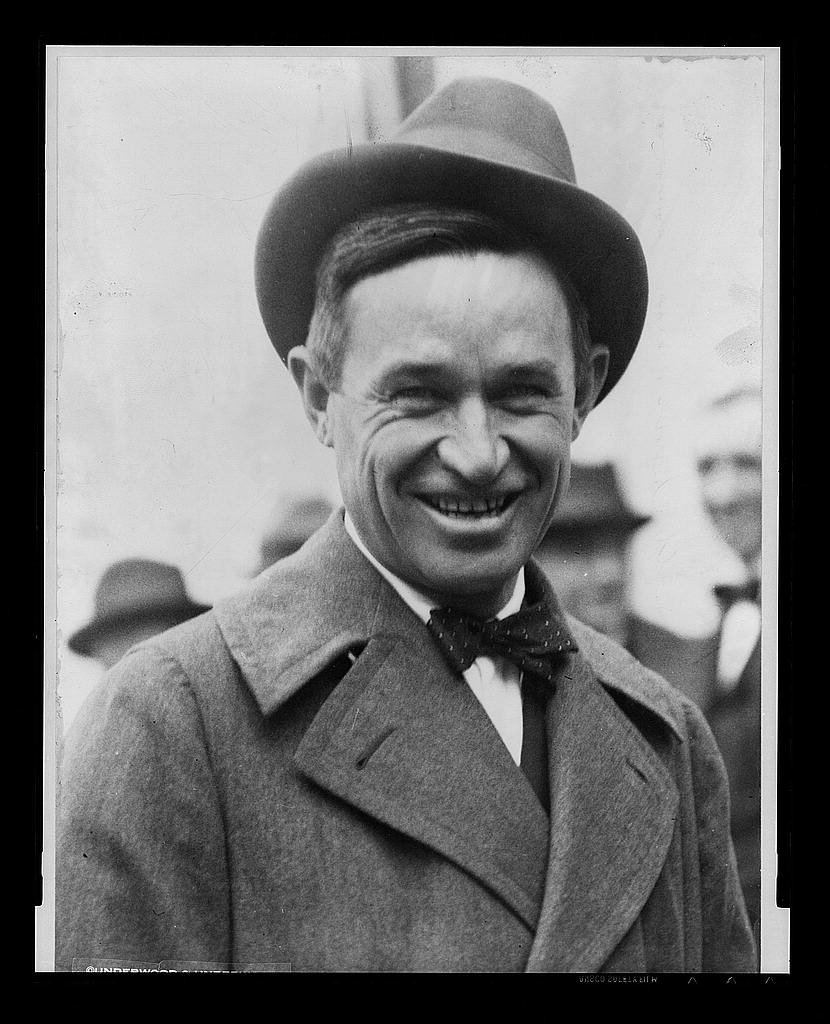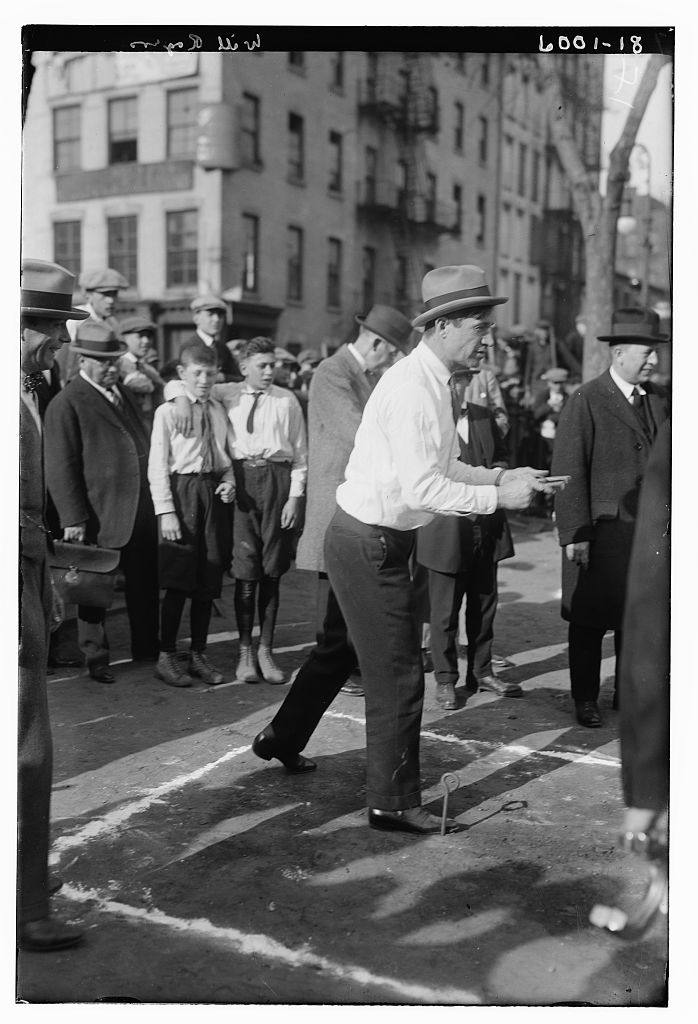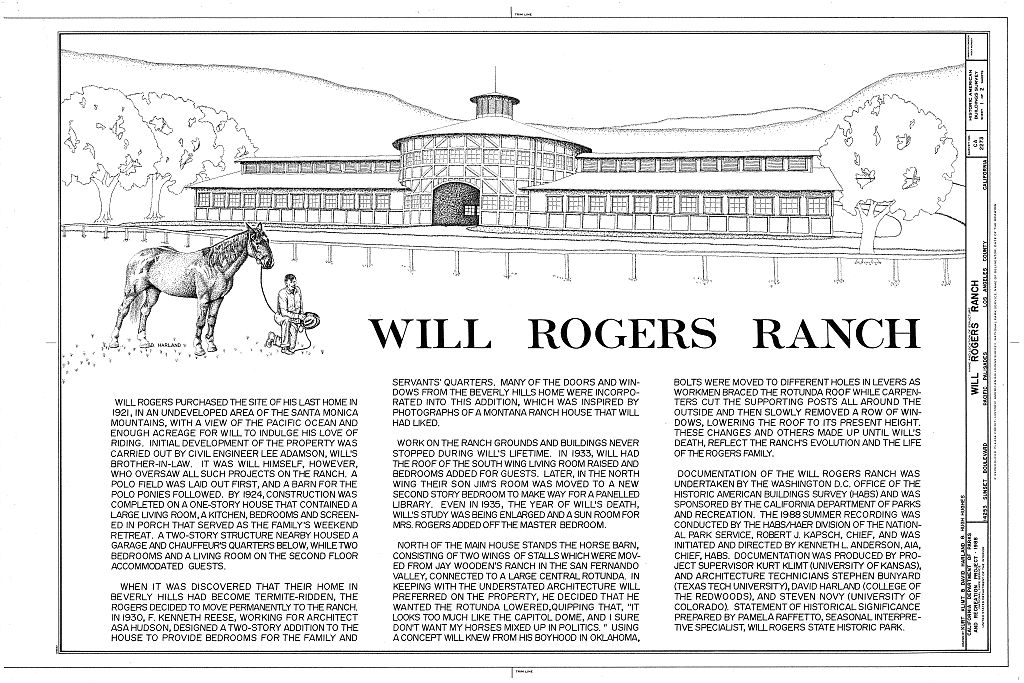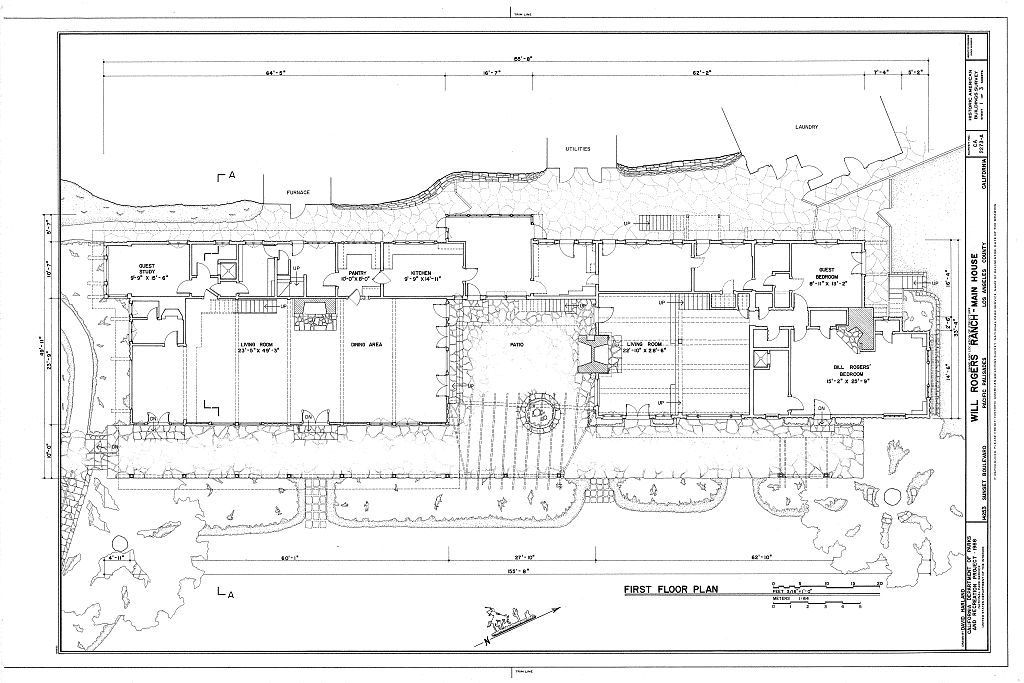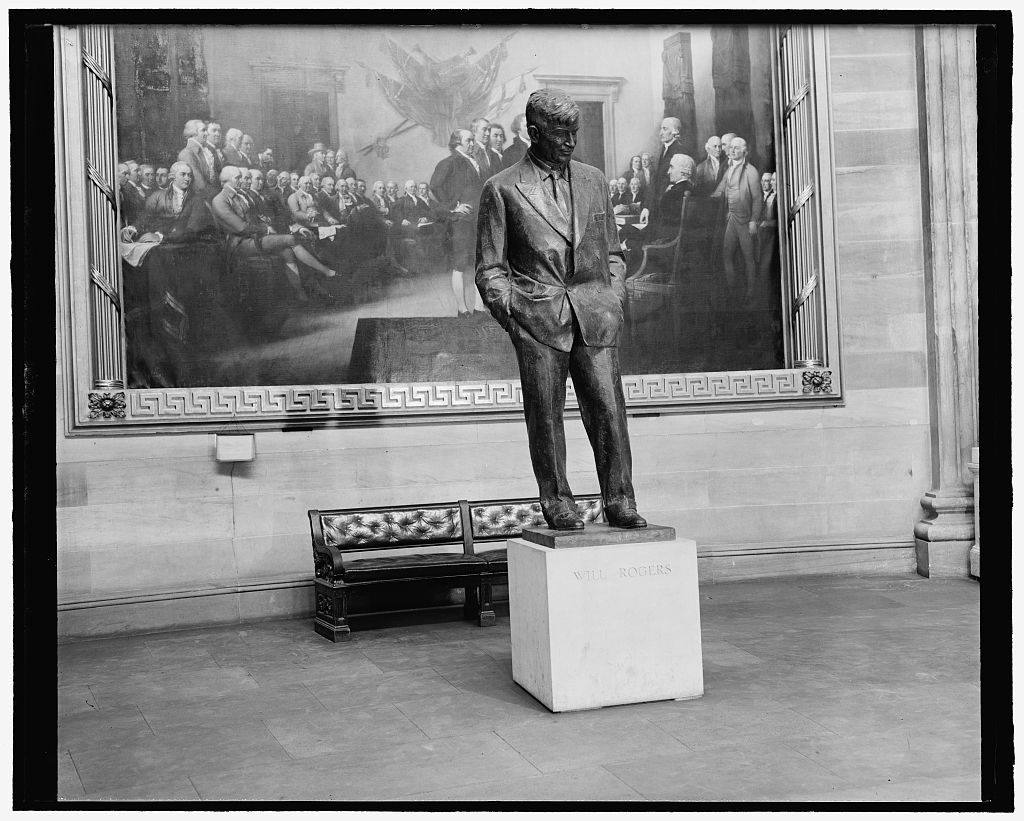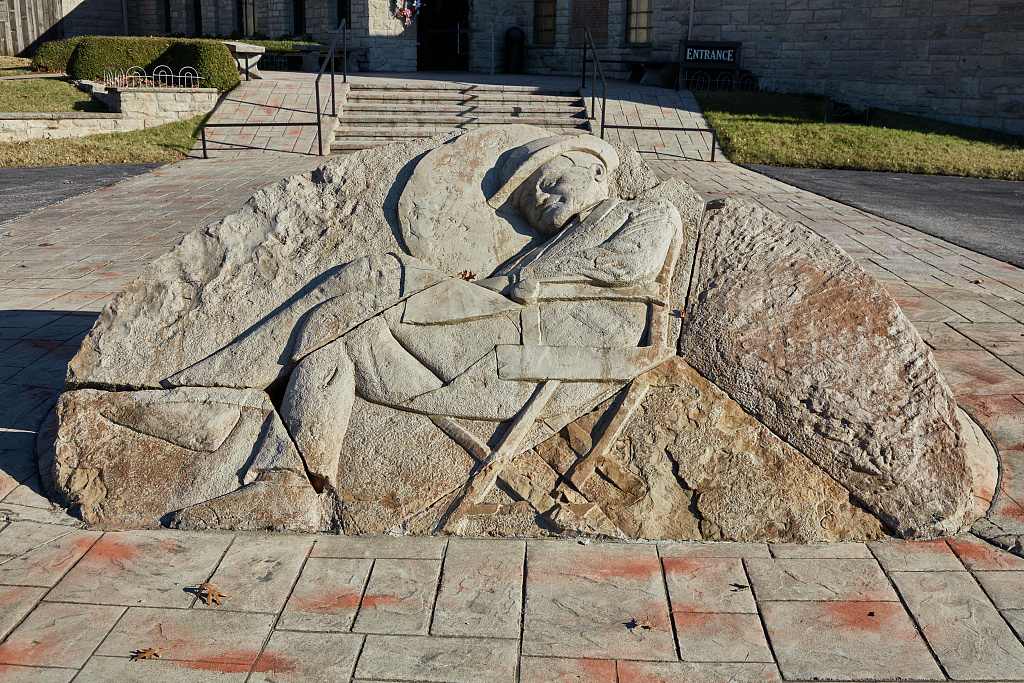This album was created by a member of the TPS Teachers Network, a professional social media network for educators, funded by a grant from the Library of Congress. For more information, visit tpsteachersnetwork.org.
Will Rogers Ranch Lost to 2025 Los Angeles Fire
Album Description
The Pacific Palisades wildfire in Los Angeles has burned the landmark Will Rogers Ranch to the ground, according to a report from California State Parks.
:focal(375x282:376x283)/https://tf-cmsv2-smithsonianmag-media.s3.amazonaws.com/filer_public/52/af/52afcc51-4c5e-4bcb-a9f4-fab90f5a682e/will_rogers_shp_former_ranch_house_1.jpeg)
In an article that includes the photo above, The Smithsonian Magazine recounts more of the life of Will Rogers, along with ranch's story:
Rogers was a cherished renaissance entertainer: movie star, radio personality, writer, philanthropist, aviation enthusiast and “cowboy philosopher;” the parks department referred to him as “America’s most beloved citizen.” Born in 1879 as a citizen of the Cherokee Nation, in territory that later became Oklahoma, Rogers traveled the world before purchasing land in the Palisades in the 1920s. By the time Roger died in 1935, he’d developed a sprawling ranch on his 359-acre property. The estate included a 31-room mansion, houses for guests, stables and corrals, a golf course and horse-riding trails. In 1944, Rogers’ wife, Betty, donated the property to California, and it became a historic park.
This album pulls together resources from the Library of Congress about Will Rogers. It includes pages of architectural drawings from the HABS/HAER/HALS collections of historic American buildings, photos of the famous entertainer, and two recordings of Will Rogers that I highly recommend! Feel free to add teaching resources and ideas for introducing this remarkable performer into your students' lives.
 Pre K - 2
Pre K - 2  3 - 5
3 - 5  6 - 8
6 - 8  9 - 12
9 - 12  Art/Music
Art/Music  Social Studies/History
Social Studies/History  Will Rogers
Will Rogers  Wildfires
Wildfires  Los Angeles
Los Angeles  Pacific Palisades
Pacific Palisades  California
California  HABS/HAER/HALS
HABS/HAER/HALS
California's Western Ranch House - California State Parks Website
Teaching Notes
This page from California State Parks describes the planning and building of the Will Rogers Ranch. It includes photographs, and it ends with this:
Historic photographs show a California ranch lifestyle that was casual, comfortable, and gracefully social.
Students might discuss what they think will happen next. Will the house be replaced? What are the pros and cons of various decisions? What other cultural treasures were lost in the Los Angeles fires? How do cultural institutions plan for disasters? How does a structure make it onto the National Register of Historic Places, as the ranch did in 1971?
Will Rogers
Teaching Notes
In this undated portrait of Will Rogers, we see the smile and demeanor that endeared him to millions of Americans.
What do students see in this portrait that reminds them of comedians today? How does one become a successful comedian? What were the ways in which Will Rogers might have reached the public? How do comedians reach the public today?
Reference link: http://www.loc.gov/item/2004672788/
Reference note
Summary
- Portrait, head and shoulders, facing front.
Created / Published
- [no date recorded on caption card]
Notes
- - Photo by Underwood & Underwood.
- - This record contains unverified, old data from caption card.
Repository
- Library of Congress Prints and Photographs Division Washington, D.C. 20540 USA
Digital Id
- cph 3a21749 //hdl.loc.gov/loc.pnp/cph.3a21749
Will Rogers plays horse-shoes
Teaching Notes
Do students think this photograph was taken at the Will Rogers Ranch? Why or why not?
Did paparazzi exist in 1920?
What do students observe in this photograph? What else can students learn about playing horseshoes? What other photographs of playing horseshoes can they find at the Library of Congress? Are horseshoes still played today? If so, where?
Reference link: http://www.loc.gov/item/2014716114/
Reference note
Created / Published
- [between ca. 1920 and ca. 1925]
Genre
- Glass negatives
Notes
- - Title from data provided by the Bain News Service on the negative.
- - Forms part of: George Grantham Bain Collection (Library of Congress).
- - General information about the George Grantham Bain Collection is available at http://hdl.loc.gov/loc.pnp/pp.ggbain
Repository
- Library of Congress Prints and Photographs Division Washington, D.C. 20540 USA http://hdl.loc.gov/loc.pnp/pp.print
Digital Id
- ggbain 35964 //hdl.loc.gov/loc.pnp/ggbain.35964
Will Rogers Ranch, 14253 Sunset Boulevard, Pacific Palisades, Los Angeles County, CA
Teaching Notes
In addition to reading the HABS Survey information about the Will Rogers Ranch, students can move to the second page of this resource to study the site where it was built, as well as the evolution of the structures added over the years when Will Rogers lived there.
They might also compare the land to current maps of the wildfire in Pacific Palisades. What might have led to the fire's activity on this land and why was it not possible to save the ranch?
Reference link: http://www.loc.gov/item/ca1524/
Reference note
Created / Published
- Documentation compiled after 1933
Notes
- - Significance: Will Rogers purchased the site of his last home in 1921, in an undeveloped area of the Santa Monica Mountains, with a view of the Pacific Ocean and enough acreage for Will to indulge his love of riding. Initial development of the property was carried out by civil engineer Lee Adamson, Will's brother-in-law. It was Will himself, however, who oversaw all such projects on the ranch. A polo field was laid out first, and a barn for the polo ponies followed. By 1924, construction was completed on a one-story house that contained a large living room, a kitchen, bedrooms and screened in porch that served as the family's weekend retreat. A two-story structure nearby housed a garage and chauffeur's quarters below, while two bedrooms and a living room on the second floor accommodated guests. When it was discovered that their home in Beverly Hills had become termite-ridden, the Rogers decided to move permanently to the ranch. In 1930, F. Kenneth Reese, working for architect Asa Hudson, designed a two-story addition to the house to proved bedrooms for the family and servants' quarters. Many of the doors and windows from the Beverly Hills home were incorporated into this addition, which was inspired by photographs of a Montana ranch house that Will had liked. Work on the ranch grounds and buildings never stopped during Will's lifetime. In 1933, Will had the roof of the south wing living room raised and bedrooms added for guests. Later, in the north wing their son Jim's room was moved to a new second story bedroom to make way for a panelled library. Even in 1935, the year of Will's death, Will's study was being enlarged and a sun room for Mrs. Rogers added off the master bedroom. North of the main house stands the horse barn, consisting of two wings of stalls which were moved from Jay Wooden's ranch in the San Fernando Valley, connected to a large central rotunda. In keeping with the understated architecture Will preferred on the property, he decided that he wanted the rotunda lowered, quipping that, "It looks too much like the Capitol dome, and I sure don't want my horses mixed up in politics." Using a concept Will knew from his boyhood in Oklahoma, bolts were moved to different holes in levers as workmen braced the rotunda roof while carpenters cut the supporting posts all around the outside and then slowly removed a row of windows, lowering the roof to its present height. These changes and other made up until Will's death, reflect the ranch's evolution and the life of the Rogers family.
- - Survey number: HABS CA-2273
- - Building/structure dates: 19h1 Initial Construction
- - National Register of Historic Places NRIS Number: 71000149
Repository
- Library of Congress Prints and Photographs Division Washington, D.C. 20540 USA http://hdl.loc.gov/loc.pnp/pp.print
Will Rogers Ranch, Main House, 14253 Sunset Boulevard, Pacific Palisades, Los Angeles County, CA
Teaching Notes
Three architectural drawings of the Will Rogers Ranch house - first floor, second floor, and elevation.
Reference link: http://www.loc.gov/item/ca1525/
Reference note
Created / Published
- Documentation compiled after 1933
Notes
- - Significance: Built in the 1920s-30s, this rustic craftsman-influenced example of affluent California ranch architecture served as the weekend retreat and eventually the permanent family home of humorist, writer, and actor Will Rogers (1879-1935) during his most successful years.
- - Unprocessed Field note material exists for this structure: FN-247
- - Survey number: HABS CA-2273-A
- - Building/structure dates: 1924 Initial Construction
- - Building/structure dates: 1930 Subsequent Work
- - National Register of Historic Places NRIS Number: 71000149
Repository
- Library of Congress Prints and Photographs Division Washington, D.C. 20540 USA http://hdl.loc.gov/loc.pnp/pp.print
Will Rogers Statue, United States Capitol
Teaching Notes
"Shortly after entertainer Will Rogers was killed in an airplane crash on August 15, 1935, the state of Oklahoma passed a bill to authorize that its second statue for the National Statuary Hall Collection in the U.S. Capitol building in Washington, D.C. be one of Will Rogers. On the recommendation of Betty Rogers, Will Rogers' wife, the sculptor Jo Davidson was awarded the commission."
"Davidson and Rogers had known each other for a number of years, during which time Davidson had frequently attempted to convince Rogers to pose for him, and Rogers had always put it off, referring to Davidson as 'you old head-hunter.'"
Read more about the statue in the Wikipedia article about it HERE.
Reference link: http://www.loc.gov/item/2016876144/
Reference note
Created / Published
- [1938 or 1939]
Genre
- Glass negatives
Notes
- - Date based on date of negatives in same range.
- - Gift; Harris & Ewing, Inc. 1955.
- - General information about the Harris & Ewing Collection is available at http://hdl.loc.gov/loc.pnp/pp.hec
- - Temp. note: Batch five.
Repository
- Library of Congress Prints and Photographs Division Washington, D.C. 20540 USA http://hdl.loc.gov/loc.pnp/pp.print
Digital Id
- hec 27190 //hdl.loc.gov/loc.pnp/hec.27190
Will Rogers talks to the bankers
Teaching Notes
Will Rogers gave this after dinner speech at a banquet of bankers from all over the world, gathered in New York in 1923.
In the speech, Rogers begins, "Loan sharks and interest hounds. I have addressed every form of organized graft in the United States...uh, excepting Congress."
It reminds me of the roasts I've heard at the annual charity White House Correspondents' Dinner.
Why do students think this speech was effective?
Reference link: https://www.loc.gov/item/jukebox-67263/
Reference note
Summary: Monologue
Genre: Comedies
Will Rogers' first political speech
Teaching Notes
In Will Rogers' first foray into politics, he says that his opponent must be a scoundrel because from what he knows, "Every politician is a scoundrel and a tool of the interests."
How does this humorous speech compare to political speeches today?
Reference link: https://www.loc.gov/item/jukebox-67264/
Reference note
Summary: Monologue
Genre: Comedies
A sculpture, almost flat to the ground, sculpture of the renowned American humorist and movie actor Will Rogers, beloved as "America's Cowboy Philosopher" at the Will Rogers Memorial Museum in Claremore, Oklahoma
Teaching Notes
The sculpture of Will Rogers is an example of a primary source which serves as a memorial to honor the renowned American humorist and movie actor.
A July 30, 2021 Minerva’s Kaleidoscope Blog post "History in Our Backyards: Monuments and Memorials" challenges students to create their own monument or memorial in order to honor something or someone that is important to them.
Students might consider these questions:
- What do I want to create?
- What do I want to convey in my monument, based on how I’ve seen others depicted in memorials?
- What important elements of the person or thing need to be represented in my monument?
- What medium am I going to use to create my monument?
- Will everyone see my creation in the same way? Why or why not?
Reference link: http://www.loc.gov/item/2020743739/
Reference note
Created / Published
- 2020-12-04.
Genre
- Digital photographs--Color--2020
Notes
- - Title, date, keywords, and additional description details based on information provided by the photographer.
- - His image, carved in stone, shows him in a Hollywood-type director's chair, as if he was relaxing while awaiting his turn before the camera.
- - Purchase; Carol M. Highsmith Photography, Inc.; 2020; (DLC/PP-2020:133).
- - Forms part of Carol M. Highsmith's America Project in the Carol M. Highsmith Archive.
Repository
- Library of Congress Prints and Photographs Division Washington, D.C. 20540 USA https://hdl.loc.gov/loc.pnp/pp.print
Digital Id
- highsm 65590 https://hdl.loc.gov/loc.pnp/highsm.65590
A Mass Erasure of Heritage
Teaching Notes
This article from the Los Angeles Times dated January 12, 2025, gives a broad view of the terrible losses of a number of cultural institutions in the Los Angeles fires and lists examples for additional student research on preservation, environmental issues, emergency planning and preparedness, and more.
Cultural Heritage Historic Preservation Emergency Preparedness

